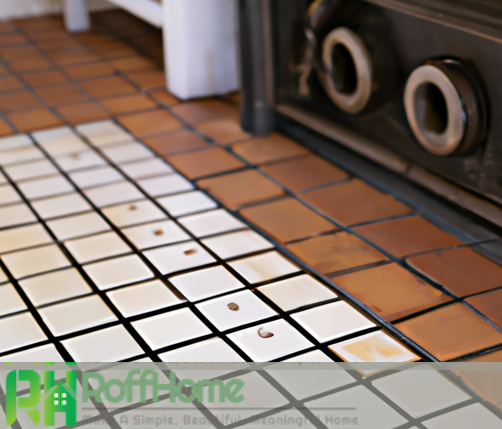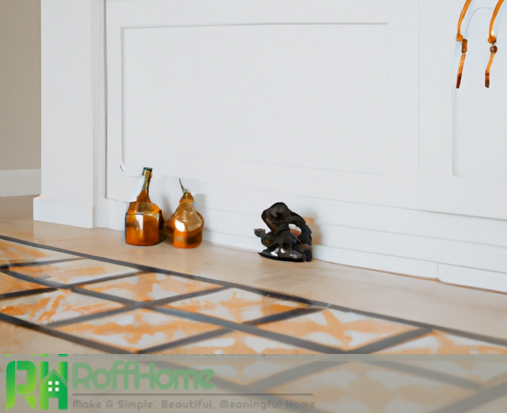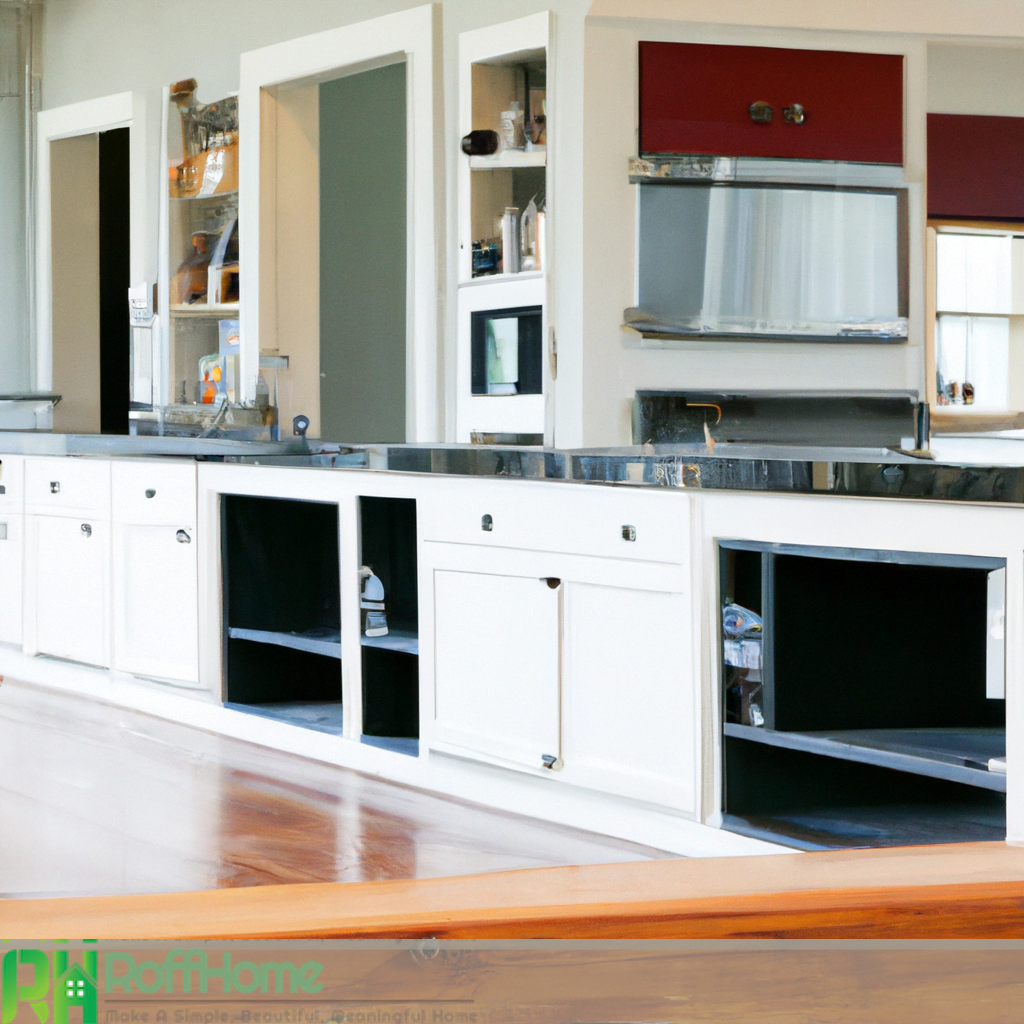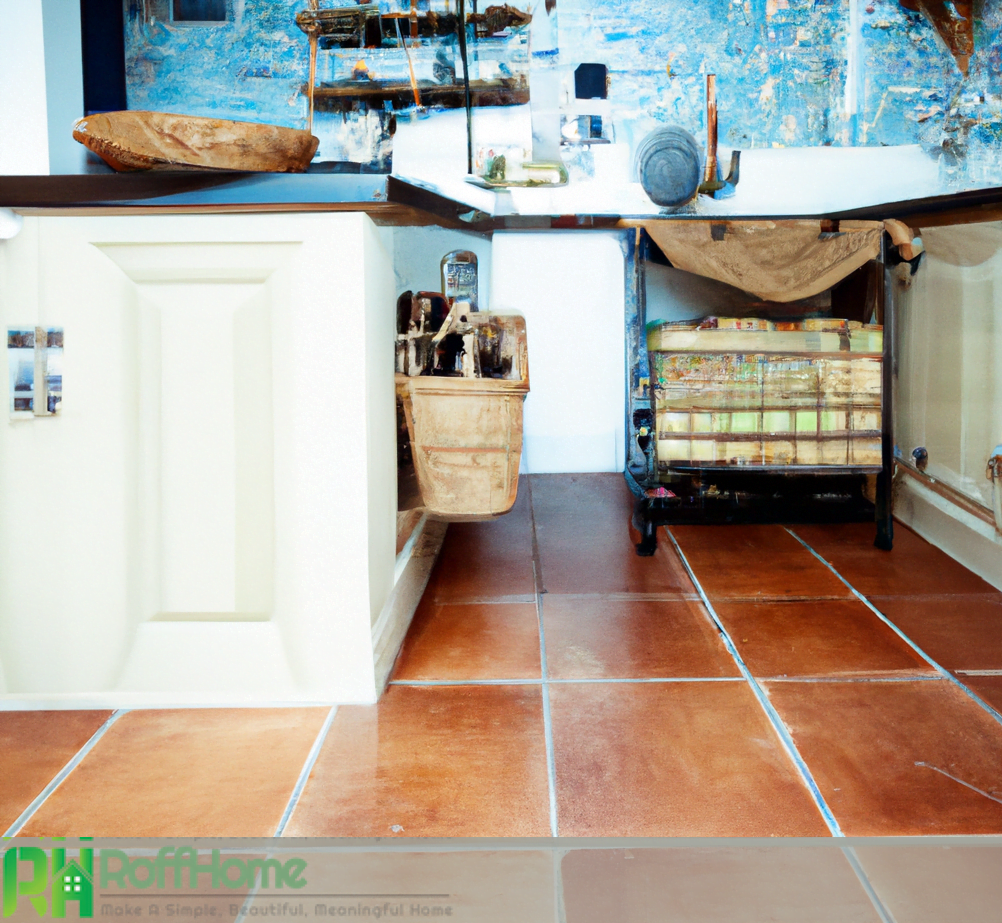Transform Your Kitchen with Farmhouse Tile Flooring – Best Options and Installation Tips in 2023

A farmhouse kitchen tile floor adds a touch of rustic charm and timeless elegance to your kitchen space. The farmhouse style has become increasingly popular in recent years, and flooring is a key element of this design trend. Tile flooring offers several benefits, including durability, ease of maintenance, and a wide range of design options. Choosing the right one for your kitchen can be overwhelming with so many flooring options.
However, when it comes to farmhouse kitchens, flooring is a top choice. The durability and low maintenance of flooring make it ideal for the high traffic and usage of a kitchen.
The versatility of flooring allows you to incorporate different textures and colors into your kitchen design. Whether you create a bold statement with a patterned floor or keep it simple with a classic subway tile, there are countless options to choose from. The cost of installing flooring can vary, but it is an investment that is well worth it in the long run. By incorporating flooring into your farmhouse kitchen design, you’ll add practicality and style to your space.
Design Trends for Farmhouse Kitchen Tile Flooring
Design Trends for Farmhouse Kitchen Flooring are constantly evolving, but a few classic styles have remained popular. One of the most popular design trends is large, rectangular subway tiles. These tiles offer a clean and simple look that complements the rustic charm of a farmhouse kitchen. Another popular trend is using patterned tiles, such as hexagonal or herringbone shapes, to add interest and texture to the kitchen floor.
Incorporating different textures and colors into the kitchen floor is another growing trend in farmhouse kitchen flooring. For example, combining smooth and rough tiles, or pairing neutral tiles with pops of color, can add depth and dimension to the kitchen space. Additionally, using tiles with natural patterns and imperfections, such as terra-cotta or slate, can bring a touch of the outdoors into your kitchen.
Mixing and matching different types of flooring is also a popular trend in farmhouse kitchen design. For example, you can use a solid color tile for most kitchen floors, then incorporate a patterned tile as a border or accent. This creates a unique and eye-catching look that is both stylish and functional.
Finally, using large-format tiles is another growing trend in farmhouse kitchen flooring. These tiles offer a seamless and modern look while maintaining the warmth and comfort of a traditional farmhouse kitchen.

How to choose the right type of tile flooring for a farmhouse kitchen
Choosing the right type of tile flooring for a farmhouse kitchen can be challenging, but with the right information, it can be a rewarding experience. There are several factors to consider when choosing flooring for your farmhouse kitchen, including cost, durability, maintenance, and design elements.
One of the first things to consider is cost. Different types of flooring can vary in price, so it’s important to determine your budget before you start shopping. While some types of flooring may be more expensive upfront, they may also be more durable and require less maintenance over time, which can help save money in the long run.
Durability is another important factor when choosing flooring for your farmhouse kitchen. Kitchen flooring is subjected to high foot traffic, spills, and stains, so it’s important to choose flooring that can stand up to the demands of a busy kitchen. Some floorings options, such as porcelain or ceramic, are highly durable and can resist scratches and stains, making them a good choice for a farmhouse kitchen.
Maintenance is also an important factor to consider when choosing tile flooring for your farmhouse kitchen. Some types of tile flooring, such as natural stone, can be more difficult to clean and maintain than others, so choosing tile flooring that is easy to clean and care for is important.
Design elements are also an important factor to consider when choosing flooring for your farmhouse kitchen. The flooring you choose should complement the overall design of your kitchen, including the cabinetry, countertops, and other design elements. Many types of flooring are available, including porcelain, ceramic, natural stone, and more, so you can choose flooring that fits your style and taste.
How to Mix and Match Farmhouse Kitchen Tile Flooring with Other Design Elements
Mixing and matching farmhouse kitchen tile flooring with other design elements can add depth, interest, and personality to your kitchen space. With the right combination of flooring, cabinetry, countertops, and accessories, you can create a warm and inviting farmhouse kitchen that is both functional and stylish.
One of the key elements of mixing and matching farmhouse kitchen flooring is choosing a neutral flooring that complements the other design elements in the kitchen. For example, if your kitchen features white cabinetry and neutral countertops, neutral flooring, such as a warm beige or light gray, can help tie everything together.
Another way to mix and match farmhouse kitchen flooring is by incorporating different textures and patterns into the kitchen space. For example, you can choose a solid color flooring for most of the kitchen and then use a patterned tile, such as a herringbone or hexagonal tile, as a border or accent. This creates a unique and eye-catching look that adds interest and texture to the kitchen.
Incorporating different colors into your farmhouse kitchen is another way to mix and match flooring with other design elements. For example, you can use neutral tiles for most of the kitchen floor and then add a pop of color, such as blue or green, in the form of a patterned tile or decorative accents. This can help add visual interest to your kitchen while maintaining a farmhouse kitchen’s warm and rustic feel.

The Cost of Installing Tile Flooring in a Farmhouse Kitchen
The cost of installing tile flooring in a farmhouse kitchen varies depending on several factors, such as the type of tile, the size of the kitchen, and the complexity of the installation. On average, you can expect to spend anywhere from $5 to $20 per square foot for flooring materials and installation.
One factor that affects the cost of installing flooring in a farmhouse kitchen is the type of tile you choose. Natural stone tiles, such as marble, granite, or travertine, are typically more expensive than ceramic or porcelain tiles. Also, hand-painted or decorative tiles may be more costly than solid-colored tiles.
Another factor that affects the flooring installation cost is your kitchen size. A larger kitchen will require more materials and a longer installation time, which can increase the project’s overall cost.
The complexity of the installation is also an important factor to consider when estimating the cost of flooring. If your kitchen has complex cuts or angles, the installation process may be more time-consuming and complicated, increasing the cost.
It’s also important to consider the cost of any necessary subfloor preparation, such as removing existing flooring, leveling the subfloor, or adding a moisture barrier. These additional expenses can add to the overall cost of installing flooring in your farmhouse kitchen.

Easy Installation Tips for Farmhouse Kitchen Tile Flooring
Installing tile flooring in your farmhouse kitchen can be a rewarding DIY project that can add charm, durability, and style to your space. However, proper preparation and planning are key to ensuring a successful installation. Here are some easy installation tips to help you get started:
Measure your kitchen accurately: Before you start, measure the floor space of your kitchen, including the length and width of each wall. This will help you determine the tile you need and ensure you have enough time to complete the project.
Prepare the subfloor: Make sure your subfloor is clean, level, and free of debris. If necessary, remove any old flooring and make any necessary repairs. You may also need to install a moisture barrier to protect your subfloor from moisture.
Choose the right tile adhesive: Different tile adhesives are appropriate for different types of tile, so make sure you choose the right one for your project. If you’re installing ceramic or porcelain tiles, a latex-modified thinset is a good choice. A mastic adhesive is a good option if you’re installing natural stone tiles.
Plan the tile layout: Before you start laying the tile, plan the tile layout and determine the best starting point. This will help you ensure that the tiles are properly aligned and spaced and also help you avoid making any cuts in awkward or difficult areas.
Cut tiles carefully: If you need to make cuts, use a tile cutter or a tile saw to ensure clean and precise cuts. If installing a border or a decorative feature, measure and cut the tiles carefully to ensure a perfect fit.
Grout and seal:
- Once the tiles are installed, allow the adhesive to dry completely.
- Grout the joints between the tiles and clean up any excess grout.
- Seal the grout lines to protect them from moisture and stains.
Incorporating Textures and Colors in Your Farmhouse Kitchen Tile Flooring
The flooring in your farmhouse kitchen is a blank canvas that you can use to create a unique and beautiful design. Incorporating textures and colors into your flooring is a great way to add interest and character to your space. Here are some tips for incorporating textures and colors in your farmhouse kitchen flooring:
Choose a color scheme: Select a color scheme that complements the rest of your farmhouse kitchen decor. You can choose neutral colors, such as beige, cream, or gray, or you can opt for bold and more vibrant hues, such as blue or green.
Mix and match textures: Experiment with different textures, such as smooth, rough, or textured, to add interest and depth to your flooring. Mixing and matching different textures can also help you create a harmonious and cohesive look.
Use decorative tile accents: Decorative tile accents, such as border or mosaic tiles, are a great way to add color and texture to your flooring. You can choose tiles in a different color or texture to create a contrasting accent or opt for tiles that match the rest of your flooring for a more subtle look.
Create a pattern: Create a pattern with your flooring to add visual interest and dimension. You can choose from various patterns, such as herringbone, chevron, or basketweave, to create a unique and beautiful design.
Add a backsplash: Installing a tile backsplash in your farmhouse kitchen is a great way to add color and texture to your space. You can choose tiles in a complementary color or pattern to your flooring or opt for a contrasting backsplash to create a bold and eye-catching look.
Maintenance and Care for Farmhouse Kitchen Tile Flooring
Maintaining and caring for your farmhouse kitchen flooring is essential to keep it looking its best for years to come. Here are some tips for maintaining and caring for your flooring:
Regular cleaning:
- Regularly sweep or vacuum your tile flooring to remove dirt, debris, and crumbs.
- Mop or wipe the tiles with mild cleaning and water.
- Avoid using abrasive cleaning products or scrubbers that could scratch or damage the tiles.
Seal the grout: Grout is porous and easily stained, and discolored. To prevent this, consider sealing the grout lines to protect them from moisture and spills.
Protect from moisture: Water and moisture can damage flooring, so be sure to wipe up spills immediately and place rugs or mats in high-traffic areas to absorb moisture.
Avoid scratches: Place furniture pads under chairs and tables to prevent scratches on the flooring. Consider using floor protectors under heavy furniture to prevent dents and scratches.
Regular upkeep: Inspect your flooring regularly for chips or cracks, and have them repaired promptly to prevent further damage. Consider re-grouting and resealing your tiles every few years to keep them looking their best.
The Benefits of Tile Flooring in a Farmhouse Kitchen
The flooring offers many benefits for a farmhouse kitchen. Here are some of the most notable benefits of tile flooring:
Durability: The flooring is incredibly durable and can withstand heavy foot traffic, spills, and scratches. It is also resistant to moisture, making it a great option for kitchens where spills and splashes are common.
Easy maintenance: The flooring is easy to clean and maintain. Sweep or vacuum regularly to remove dirt and debris, and mop or wipe down with a mild cleaning solution as needed.
Design versatility: The flooring is available in a wide range of textures, colors, and patterns, allowing you to create a customized look for your farmhouse kitchen. Whether you prefer a classic or modern look, there is a tile option to suit your style.
Cost-effective: The flooring is a cost-effective option compared to other kitchen flooring types, especially considering its durability and low maintenance requirements.
Hypoallergenic: The flooring is hypoallergenic and does not harbor dust mites, mold, or other allergens, making it a great option for households with allergies or asthma.
Easy installation: Installing flooring is a relatively simple process, making it a good option for DIY enthusiasts or those on a budget.
In conclusion, a farmhouse kitchen tile floor adds charm, durability, and versatility to your kitchen design. Whether you prefer traditional textures and colors or modern designs, there is a flooring option for every style. Consider the cost, maintenance, and installation when choosing the right flooring for your farmhouse kitchen. With the right flooring, you can create a functional and beautiful space that will last for years.





